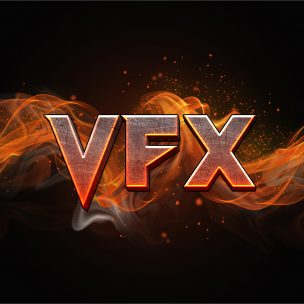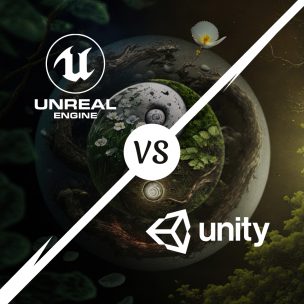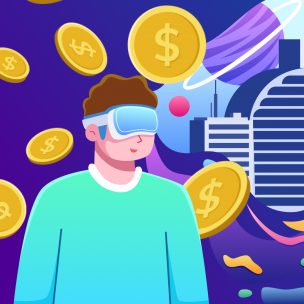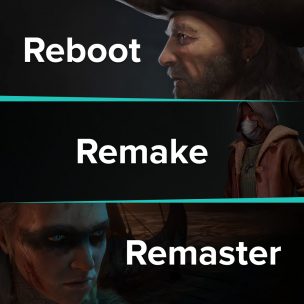Gaming News
The Art of Storytelling: How Is Storytelling Used in Video Games?
Storytelling is an art form that people have used for centuries to convey messages and entertain audiences. Whether through books, movies, or video games. Storytelling can capture our imaginations and transport us to new worlds. Have you ever noticed how storytelling is used in video games? Or what role does storytelling play in their development? Storytelling is integral to game design, from the opening cutscenes to the final boss battles. A video game is a story that leads you to a fantasy realm with unbelievable visual graphics.
What Is Storytelling in Game Development?
Games with a well-written story can spark your imagination and keep you engaged for hours. Besides, a good story can enhance the overall gameplay experience. It helps players develop an emotional connection with the game’s world and characters.
Storytelling in video games is a complex process. It involves various elements such as gameplay, narrative, and visual design. The use of storytelling in video games differs from other traditional forms of storytelling, like movies, books, or theater. The player is an active participant in the story. He has power over the choices and actions of the protagonist.
Video game storytelling can also be explicit or implicit. Explicit is when you get the story through cutscenes, dialogue, or written text. Implicit ones are when the environment, level design, and actions of non-playable characters convey the story.
One of the key elements here is character development. They should be relatable and likable, which helps players connect with them emotionally. Character development can occur through various means. Use dialogue, actions, or interactions with the game environment.
Another important aspect is worldbuilding. Designers create the world so that it feels immersive and believable. The environment should be consistent. The game mechanics should support the story and the world. It mostly depends on the professional skills of your developers. The Kevuru Games team takes a creative approach to game development. We offer innovative and immersive gaming experiences. Our team works with a focus on story and environment that urges players to delve into the unknown realm.
A good story can also add replay value to a game. Players who invested in the story will want to replay it to experience different endings or explore alternative paths. Besides, a well-crafted story can add a sense of purpose. It becomes more than just a collection of levels or tasks.
What Are the Benefits of Storytelling in Games Beyond Just Entertainment?
One of the key benefits is that it can provide players with a more immersive experience. It allows players to inhabit the roles of the characters; become fully invested in the game’s narrative. The players get a sense of emotional attachment and investment in the outcome. It leads to a more satisfying experience.
Another benefit is that it can help reinforce important messages or themes. Whether it’s exploring complex moral dilemmas or shining a light on social issues. Games can use their narratives to encourage players to think critically about the world around them. It can be particularly impactful for younger players. They may be more receptive to these messages when presented in a fun and engaging format.
Storytelling also encourages critical thinking and problem-solving skills. Many games require players to navigate complex storylines, make difficult decisions, and solve puzzles to progress. It helps players develop such skills as:
logical reasoning; creative thinking; adaptability that they can apply in various real-world scenarios.
Finally, it can be a powerful tool for building community and fostering social connections in our digital age. Many games have passionate fan communities. They share their love of the story and characters there. They bond over shared experiences and discuss their interpretations of the game’s narrative. Fans can form meaningful connections with one another that transcend the game itself.
The Evolution of Storytelling in Video Games
The art of storytelling in video games has undergone some transformation since the early days of gaming. As technology has advanced, the ability to tell engaging and immersive stories in games has evolved.
1. The early days
In the early days, storytelling could have been more extensive. Instead, games were more focused on gameplay mechanics, and the story was often a simple premise, such as saving a princess from a castle. As a result, the story was more of a backdrop to the gameplay than an integral part of the experience.
2. The rise of RPGs
Role-playing games (RPGs) were one of the first genres to focus on storytelling. Games like Final Fantasy and Dragon Quest are popular for their immersive worlds and engaging stories. They introduced characters with unique backstories, complex relationships, and deep motivations. Players invest in the world and characters. That’s where the story becomes a vital part of the gameplay experience.
3. Cinematic storytelling
The rise of CD-based consoles like the PlayStation and more powerful hardware introduced more cinematic storytelling. Cutscenes, whether pre-rendered or in-game sequences that advance the story, became more prevalent. Games like Metal Gear Solid and Final Fantasy VII were known for their cinematic storytelling, which helped elevate the overall experience.
4. Emergence of open-world games
The emergence of open-world games like Grand Theft Auto III and The Elder Scrolls III: Morrowind introduced a new type of storytelling. These games allowed players to explore massive worlds and create their own stories. The player’s actions and decisions significantly impacted the game’s story, making each playthrough a unique experience.
5. Telltale games
They introduced a new type of storytelling with episodic, narrative-driven games like The Walking Dead and The Wolf Among Us. They focused on character development and player choice. As a result, the choices made by the player had a significant impact on the story and the characters, making each playthrough a unique experience.
6. Virtual reality
Virtual reality (VR) can revolutionize storytelling in video games. VR helps players to completely delve themselves into the game’s world, creating a more immersive storytelling experience. Half-Life: Alyx and Lone Echo have shown the potential of VR storytelling, and it will be exciting to see how this technology continues to evolve.
What Are the Types of Narrative in Games?
As we agreed above, a well-crafted story can elevate a game from being just an entertaining experience to something truly memorable. A good story gives a sense of purpose, depth, and emotion. There are different types of storytelling in games, including linear, non-linear, and emergent.
Linear Storytelling
It is the most traditional form. In linear storytelling, the game follows a set path that the player follows in a specific order. As a result, the player’s actions have little to no effect on the story. This type of storytelling is common in strong narratives, such as the Uncharted series.
Non-Linear Storytelling
It is a less structured approach. You don’t get the game’s story in a specific order, and the player’s actions can significantly impact the story’s outcome. This type of storytelling is common in open-world games, such as Skyrim or Grand Theft Auto.
Emergent Storytelling
It is a creative approach. It is a type of storytelling that emerges from the gameplay itself. The player’s actions and decisions can create unique and unpredictable stories that are not part of the game’s narrative. Minecraft or The Sims use this type of storytelling.
4 Models of Narrative Architecture
Henry Jenkins is a known name in the game industry and a renowned scholar in media studies. In the essay “Game Design as Narrative Architecture” (2004) he suggests that a game’s design facilitates different kinds of narrative experiences. There are four specific models for interactive narrative: the evocative, the enacted, the embedded, and the emergent.
The evocative type of narrative architecture draws upon existing stories from other forms of media. It uses familiar genres or pre-existing intellectual property to prime the audience’s expectations. This method can be seen in immersive experiences like haunted houses or large-scale movie-inspired events. VR centers drop participants into specific locations within well-known universes.
The enacted narrative involves direct participation from the audience. It allows them to perform specific actions that progress the story physically. AR/VR technology have made this immersive experience more accessible. You can try it in the virtual reality experience Vader Immortal, where participants can pick up a lightsaber and swing it in combat as if they were a Jedi.
Embedded narratives rely on exploring a designed environment. The players uncover texts and other artifacts that communicate story beats. Narrative-driven games and immersive shows commonly use this technique, to populate a world and give it more depth.
Lastly, emergent narratives are not pre-structured or pre-programmed but take shape through gameplay. For example, games like The Sims allow players to define their goals. They write their own stories within the game’s authoring environment. You can find this type of design in immersive experiences like Chaos Theory, which rely on audience participation to generate unique outcomes.
Overall, these four models of narrative architecture offer a diverse range of immersive storytelling experiences. Immersive designers have a wealth of tools to create unforgettable narratives.
How Video Games Have Become the Perfect Storytelling Medium?
In recent years, video games have become a serious contender in narrative fiction. They offer players immersive and engaging stories that rival those of books, movies, and TV shows. But what makes video games so perfect as a storytelling medium?
1. Interactive storytelling
Unlike other forms of media, video games offer a unique level of interactivity that allows players to participate in the story. It’s not goes about simply watching the story unfold. Players can make choices that affect the narrative and shape the outcome. This level of interactivity makes the story more engaging;
2. Immersion
Video games can also immerse players in a story like no other medium. There you have stunning graphics, realistic sound effects, and the ability to control the action. Players can feel like they are part of the story. This level of immersion can make the story more emotionally resonant. When players start investing in the characters and the world they inhabit;
3. Non-linear storytelling
You can follow stories in a non-linear way. It allows players to experience the narrative in their own unique way. Rather than following a predetermined path, players can explore the game world at their own pace. They can discover hidden stories and side quests that add depth and complexity to the overall narrative. This nonlinear approach can make the story feel more organic and open-ended, giving players a greater sense of exploration and discovery;
4. Character development
The players can develop characters in a way that other forms of media cannot. There you get dialogue trees, character interactions, and the player’s choices. You can get to know characters on a deeper level by forming emotional connections with them. So that to understand their motivations and backstories in detail;
5. Replayability
Finally, video games have a unique advantage over other forms of media in their replayability. Players can make different choices and experience different outcomes. They can play through the game multiple times, each time discovering something new about the story or characters. This replayability can make the story feel fresh and exciting, even after multiple playthroughs.
Video games have become a powerful storytelling medium. Their features make them an ideal platform for telling complex and engaging stories that can rival those of books, movies, and TV shows. So next time you start playing, remember that you’re not just playing a game; you’re experiencing a story.
Excellent Game Storytelling Examples
To give you an example of excellent storytelling, we outlined several games to give you an idea. It’s challenging to narrow the best ones down to just five, as many games excel in this area. However, here are five games that we describe as having exceptional storytelling:
1. The Last of Us: This post-apocalyptic game follows Joel and Ellie, two survivors trying to survive in a world overrun by infected creatures. The story is emotionally gripping, exploring love, loss, and survival themes.
Posted by Naughty Dog that is one of the most successful and prolific game development studios.
2. Red Dead Redemption 2 – This Western-themed game follows Arthur Morgan, a Dutch van der Linde gang member, as he navigates the changing times and personal conflicts within the gang. The game’s story is epic and intimate, focusing on character development and the consequences of one’s actions.
Posted by GTABase.com is the largest GTA website dedicated to providing information on all Rockstar Games.
3. Life Is Strange – This episodic game follows high school student Max Caulfield, who discovers she can rewind time. As she navigates the consequences of her actions and uncovers a dark conspiracy in her hometown, the players explore friendship, loss, and coming-of-age themes.
Posted by Square Enix Ltd. which develops and licenses SQUARE ENIX® and TAITO® branded entertainment content in Europe
4. Spec Ops: The Line – This military shooter is a deconstruction of the genre, exploring the psychological toll of war and the morality of violence. The story is thought-provoking and emotionally powerful, with multiple endings that reflect the player’s choices.
Posted by The New York Times
5. The Witcher 3: Wild Hunt – This RPG follows Geralt of Rivia, a monster hunter, as he searches for his adoptive daughter and uncovers a larger conspiracy threatening the world. The story is complex and mature, exploring politics, love, and family themes.
Posted by thewitcher.com
In summary, storytelling is a complex and multi-layered process that involves various elements. It includes gameplay, narrative, visual design, character development, and worldbuilding. It’s a unique form of storytelling that allows players to be active participants in the story. There appears to be the potential to create a deep emotional connection between the player and the game world.
15 minutes
1326


















![2D Games vs 3D Games: Key Features, Pricing, and Top Genres [+6 Trends for 2023]](https://kevurugames.com/wp-content/uploads/fly-images/12664/Differences-Between-2D-Games-vs-3D-Games-304x307.jpg)
